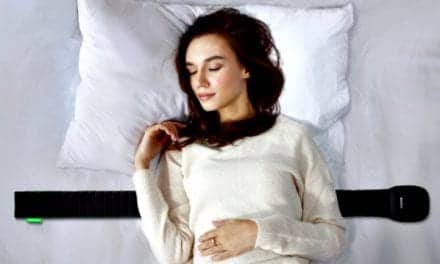By María Ángeles Bonmatí Carrión, Universidad de Murcia
Living in cities that never sleep has its price: inhabitants are getting less, worse quality, sleep. We cannot forget that sleep, though often undervalued, is a fundamental part of staying in good health. It is well established that if we don’t get enough, we end up getting sick.
But how much is enough? It depends on age, but a healthy adult needs, on average, 7 to 9 hours per day. The number is more for children, who might need anything from 9 to 16 hours per day.
Another question is when we should sleep. Since we are diurnal animals, we sleep at night. There are variations, of course, due to what are known as different chronotypes. Some of us are night owls, who tend to go to bed later and get up later, while others are larks, preferring to get up earlier and go to bed earlier.
Despite individual differences, the night is generally the time our bodies reserve for sleep. Over millions of years we have evolved to organise our physiological processes according to altering states of light and darkness. However, our nights have changed enormously in just a century and a half thanks to the widespread use of electric light. Now, in most built up areas, the night is no longer dark. Light has allowed humans, whose eyes are adapted to daylight, to colonise the night by getting rid of darkness and, as a consequence, extend our activity period well into the small hours.
Light keeps us up at night
Artificial light is considered to be, in and of itself, a form of pollution, bringing with it a range of health problems. Primarily, it makes us sleep less. There are now studies showing that, among adults and elderly people, the higher the level of artificial light during the night, the less they sleep. It has also been observed that artificial light at night –both inside and outside the home– can increase sleep problems by 22%. Artificial light is the enemy of sleep because it confuses the internal clock that regulates it: it tells us that it is daytime and that it is not time to go to bed yet.
Light pollution not only reduces the hours of sleep that we get (which is bad enough in itself), but too much artificial light at night may also have other serious health consequences. These include an increased likelihood of cardio vascular and metabolic conditions (obesity or diabetes), mental health disorders, and even some types of cancer, such as breast, prostate or colon cancer. Controlled laboratory studies leave no doubt as to the harmfulness of artificial light at night.
However, in clinical terms there is some dispute due to the inconsistency of the results. This is due, above all, to so-called “confounding factors”: circumstances specific to the most well-lit areas that make it impossible to differentiate whether damage is done by night-time light or other factors.
Traffic and nightlife
One of these confounding factors is noise, another obstacle to a good night’s sleep. By colonising darkness with electric light, we have made nights noisy, depriving ourselves of the peace and quiet that we need to fall and stay asleep. Noise leaking into our homes at any time of day is bad for our health, regardless of whether it bothers us or not. But at night, it can also interfere with our sleep.
According to the European Environment Agency, prolonged exposure to background noise contributes to 48,000 new cases of heart disease and 12,000 premature deaths every year in Europe. Additionally, 22 million people suffer from chronically disrupted sleep, and 6.5 million suffer from major chronic sleep disorders. It has been calculated that every year, one million years of healthy life are collectively lost due to the effects of noise. Coronary heart disease and sleep disorders make up the largest proportion of noise-related diseases.
The negative consequences of traffic noise have been widely proven. However, in cities at night there are other significant sources of noise. One of the biggest is nightlife. In fact, noise maps are currently being made of several Spanish cities, although corrective measures to combat the problem thus far have, more often than not, fallen short.
What is more, the noise generated by nightlife is on the rise due to an increase in outdoor terrace seating in bars, much of it as a result of the COVID-19 pandemic. For example, in Barcelona the number of outdoor tables has increased by 62% since 2019, and 5,700 new tables have appeared in Madrid, bringing the total to 60,912.
Street cleaning, often done at night or well into the early morning, is another factor. Somewhat ironically, we could say that nightly street cleaning impacts the cleaning effects that the glymphatic system has on our brains while we are sleeping.
How can local authorities protect our sleep?
Many of the barriers to a good night’s sleep could be remedied with greater awareness and empathy on the part of citizens. But we also need a suitable legal framework that is, above all, effectively enforced by local authorities.
As well as national noise regulations, there are municipal bylaws that regulate different causes of noise. But how can a town or city help its citizens to sleep better? To begin with, we must start from the premise that sleep, which is closely linked to health, should always take precedence over other activities such as nightlife. For this reason, some proposed measures would be:
Place limits on the times when loud street cleaning equipment can be used. Even if a vehicle’s motor is electric and silent, water pumps are not. They should not be used at night.
Substitute noisy public transport vehicles for electric models, and ensure that private vehicles comply with regulations.
Reduce the timetables and number of tables at bars, cafes and restaurants in residential areas, informing managers and owners of the need to respect the rest needed by local residents.
Reduce the permitted volume in noisy premises (which is often harmful to the hearing of users as well as local residents) and avoid night-time opening in residential areas. This will not only avoid the transmission of noise through walls, but also large numbers of people accumulating outside.
Avoid organising live shows that create a lot of noise in areas close to people’s homes, especially at night.
Review the placement of streetlights and other sources of light to reduce overall levels of light pollution, especially that which enters homes through windows.
Lastly, and most importantly, an understanding is needed –on both an institutional and individual level– that building a healthier society depends fundamentally on creating an environment that facilitates both our own sleep and that of our neighbours.
María Ángeles Bonmatí Carrión, Investigadora postdoctoral CIBERFES y profesora colaboradora UMU, Universidad de Murcia
This article is republished from The Conversation under a Creative Commons license. Read the original article.
Photo 97965901 © Pixs4u | Dreamstime.com





